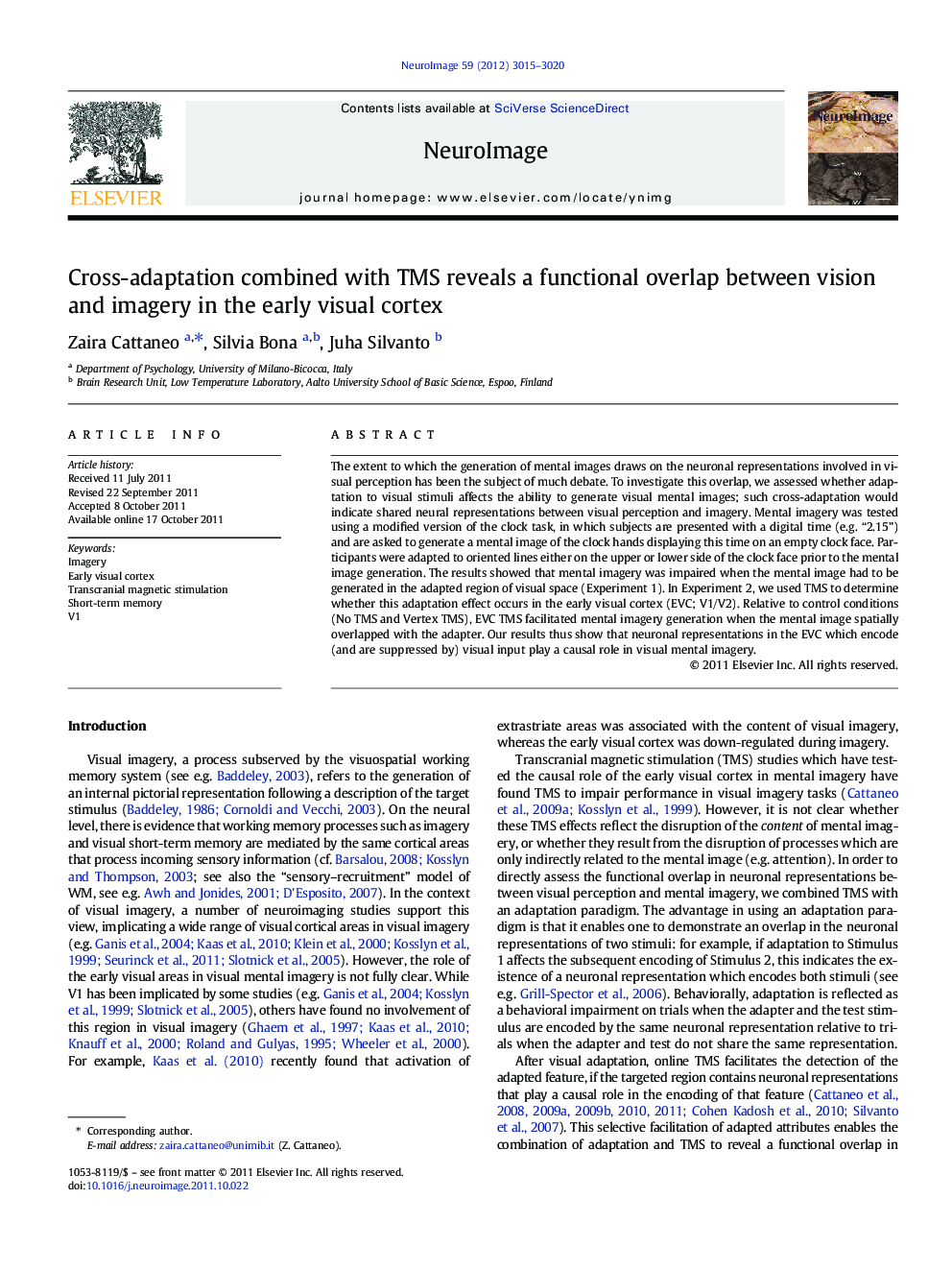| Article ID | Journal | Published Year | Pages | File Type |
|---|---|---|---|---|
| 6033680 | NeuroImage | 2012 | 6 Pages |
Abstract
The extent to which the generation of mental images draws on the neuronal representations involved in visual perception has been the subject of much debate. To investigate this overlap, we assessed whether adaptation to visual stimuli affects the ability to generate visual mental images; such cross-adaptation would indicate shared neural representations between visual perception and imagery. Mental imagery was tested using a modified version of the clock task, in which subjects are presented with a digital time (e.g. “2.15”) and are asked to generate a mental image of the clock hands displaying this time on an empty clock face. Participants were adapted to oriented lines either on the upper or lower side of the clock face prior to the mental image generation. The results showed that mental imagery was impaired when the mental image had to be generated in the adapted region of visual space (Experiment 1). In Experiment 2, we used TMS to determine whether this adaptation effect occurs in the early visual cortex (EVC; V1/V2). Relative to control conditions (No TMS and Vertex TMS), EVC TMS facilitated mental imagery generation when the mental image spatially overlapped with the adapter. Our results thus show that neuronal representations in the EVC which encode (and are suppressed by) visual input play a causal role in visual mental imagery.
Related Topics
Life Sciences
Neuroscience
Cognitive Neuroscience
Authors
Zaira Cattaneo, Silvia Bona, Juha Silvanto,
